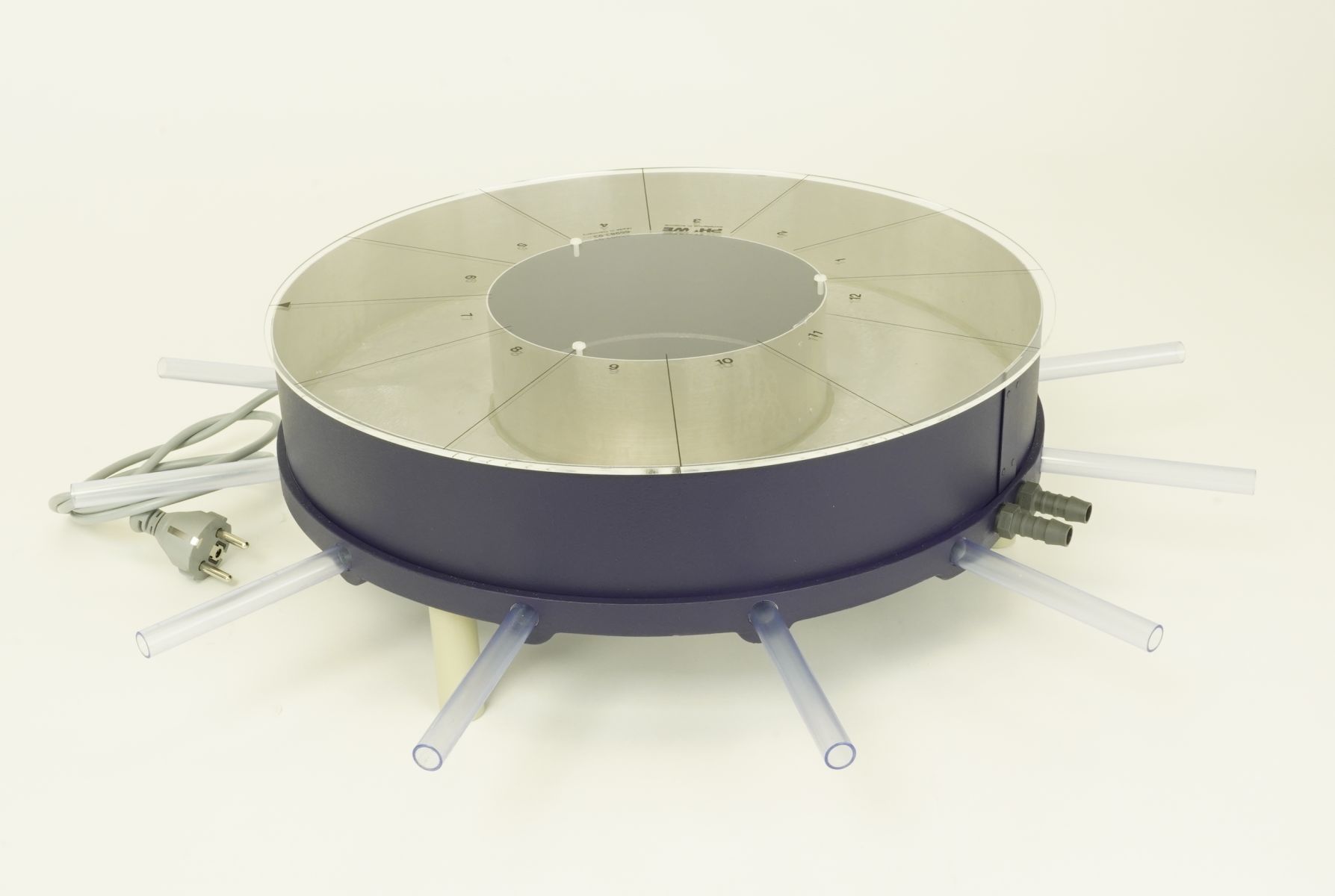Principle
The temperature requirements of animals with regard to their environment differ widely: they vary from temperatures just below 0°C for arctic and antarctic animals to temperatures of around 50°C for desert animals and animals from hot springs. Within these limits many species prefer one range: the preferential temperature. Using their thermoreceptors the animals recognize the temperature which suits them, gather in an area at the corresponding temperature (thermotaxis) and thus show their preferred temperature.
Benefits
- Precise measurement possible with 12 different temperature zones
- Allows to set up a wide temperature range
- In the ring-shaped measurement setup the animals can migrate in both directions at each measurement point
- Experimental setup can also be used for plant growth experiments
Tasks
- Test the temperature demands of different poikilothermic animal species
- Produce a temperature gradient between approximately 45°C and 10°C using a ring-shaped temperature organ
- Record the positions of the individual animals
Learning objectives
- Temperature optimum
- Poikilothermic animals
- Thermotaxis
- Phototaxis
- Thigmotaxis
- Torpor
- Environmental requirements
- Geographical seperation
The experiment can be carried out with a conventional circulator, as the experiment does not take more than one hour. This is how long most heat-sensitive insects need to get to the place with the most comfortable temperature for them. Even if the experiment lasts an hour, it is helpful to cool the tap water used down further with ice. For longer experiment durations, a cold-heat-environment thermostat (cooling thermostat) is strongly recommended.

